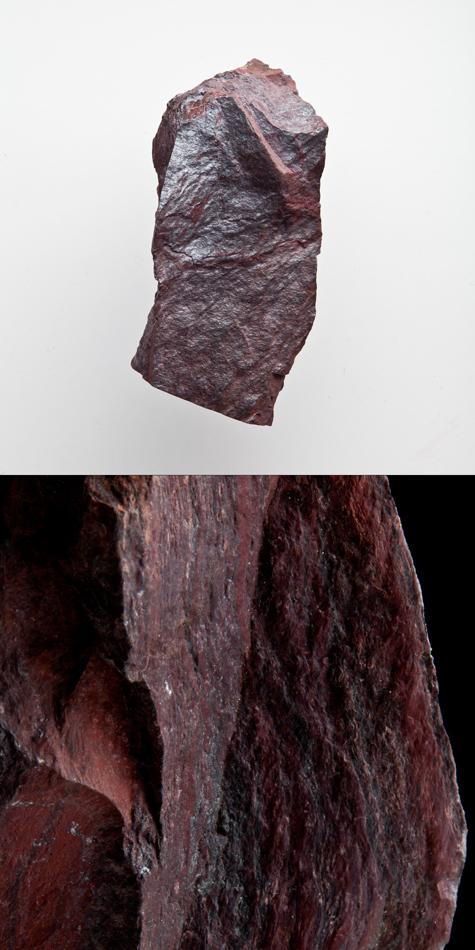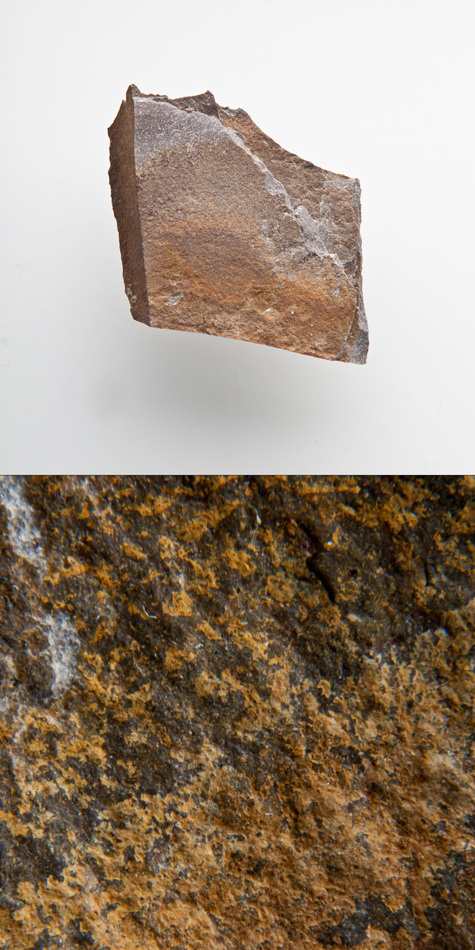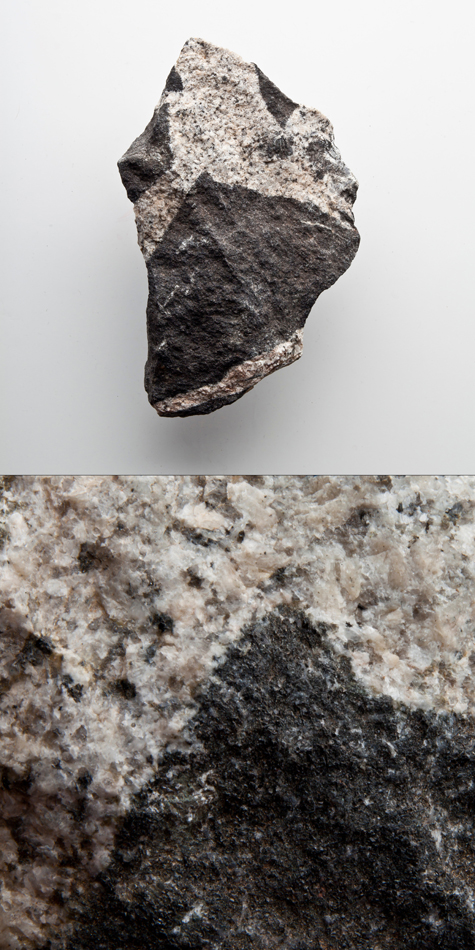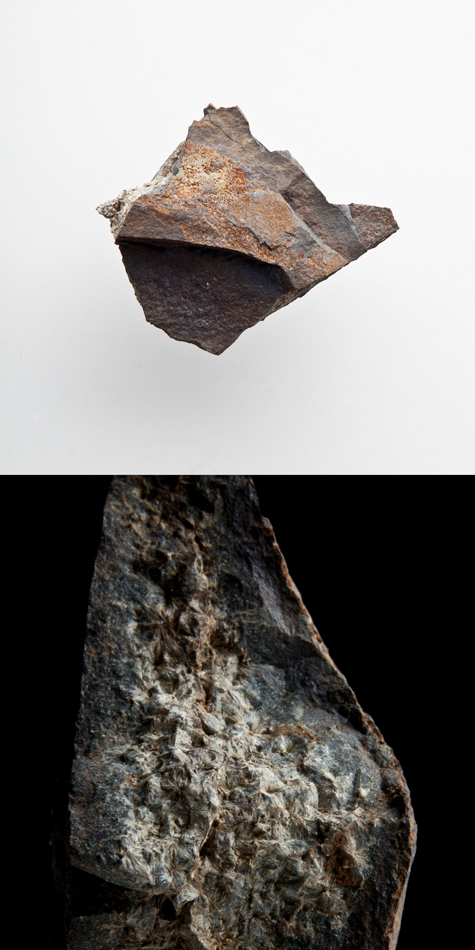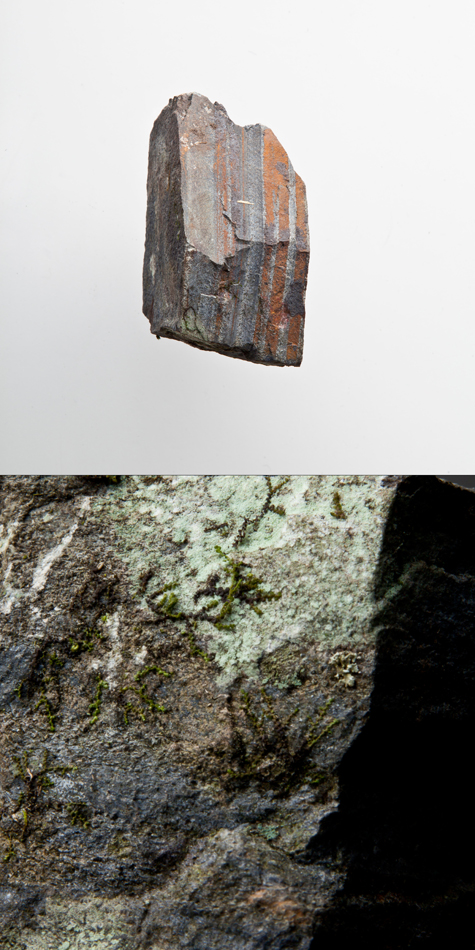Bones of the Land
Bones of the Land is a collection of 13 large scale prints (20"x40") exploring the rocks and minerals of the Penokee Hills in Northern Wisconsin. The prints (all diptychs) represent the distinct layers of rock that make up the geology of the Lake Superior Region.
Artist's Statement: I love science. Always have. Even as a little kid, it fueled my sense of wonder at the world around me. For some people, scientific theory seems antithetical to spirituality. For me the opposite is true. The more I learn about the complex, interconnected nature of everything, the more profound my sense of awe. Science, for me, is not dry and contrary. It is filled with magic and beauty and life. Much like art.
Bones of the Land explores the intersection between art and science, the ways in which each can inform the other. So often they are separated from one another, each asked to exist in it’s own vacuum. But neither can truly thrive without the other. In the great tradition of Audubon’s birds, Rembrandt’s surgical paintings, and even DaVinci’s anatomical studies, this project seeks to deepen our understanding of the world around us, to reveal new information, but also to show the intrinsic beauty of the universe.
This project also touches on one of the most important decisions facing our community. The proposed mine in the Penokee Hills is, to say the least, a contentious issue. Emotions run high on each side of the debate. And understandably so. Much is at stake. I hold my own strong opinions about the mine. I know how I feel and what I believe. I see a correct path forward. But regardless of one’s opinions, we can all gain from a deeper understanding of the science behind this discussion.
Geology has a profound impact on place. It creates topography, influences the movement of water, serves as the primary building blocks of the soil, and ultimately determines which flora and fauna make a place their home. It is the hidden structure on which all else is built. Yet most of the time it goes entirely unnoticed. How often do we observe the stones beneath our feet? Most of us rarely bend to gather a bit of rock in our hands and look closely to see what it truly is.
Myself included. My understanding of the geology of this region, arguably the most important factor in a debate about mining, is elementary at best. And I am not alone in this. Many, if not most, of the people engaged in the public discourse surrounding the mine, are not well informed. This is not a judgment. I admittedly fall into that same ill-informed group. But that’s a problem. How can we hope to make good choices for our selves and future generations without solid information?
While in no way an exhaustive resource to learn about the geology of the Lake Superior basin, this project is my visual exploration of the rocks and minerals that underlie this region, the bones of the land. My hope is that these images can open a door for more people to broaden their understanding of this place and the beauty that exists in everything here. It is also my hope that expanded knowledge can spark a renewed conversation about the value of this region, shed new light on the decisions at hand, and inform our role in shaping the future.
From a photographic stand point, this project was also my own experiment in controlling light on a very small scale. And it was hard. Much harder than I expected it to be. Some lighting concepts scale down very easily. Others, I discovered, do not. This is not new ground for photography as a medium. Others have made theses same discoveries before, but it was ground breaking for me. This process forced me to grow in my craft, greatly expanding my understanding of light and how to use it to reveal form and texture to tell a story.
I would like to express my special thanks to four people who helped with “Bones of the Land,” without their knowledge and support this project would not have been possible. First, to Robert Rush for planting the seed of this idea. To Jason Terry, for providing the space to present and the push to create. To Tom Fitz for his immense knowledge and his willingness to share. And to Sarah Tarkington for the endless list of things she does to support my work. Thank you.


